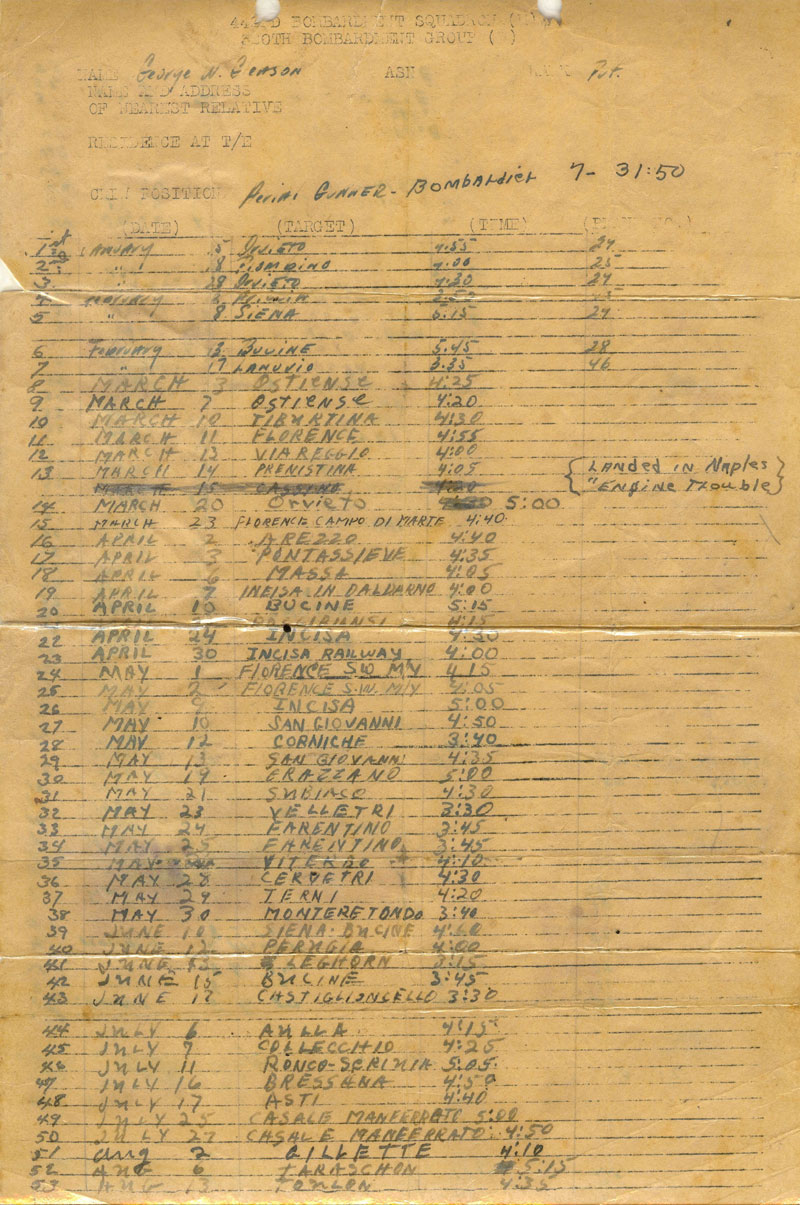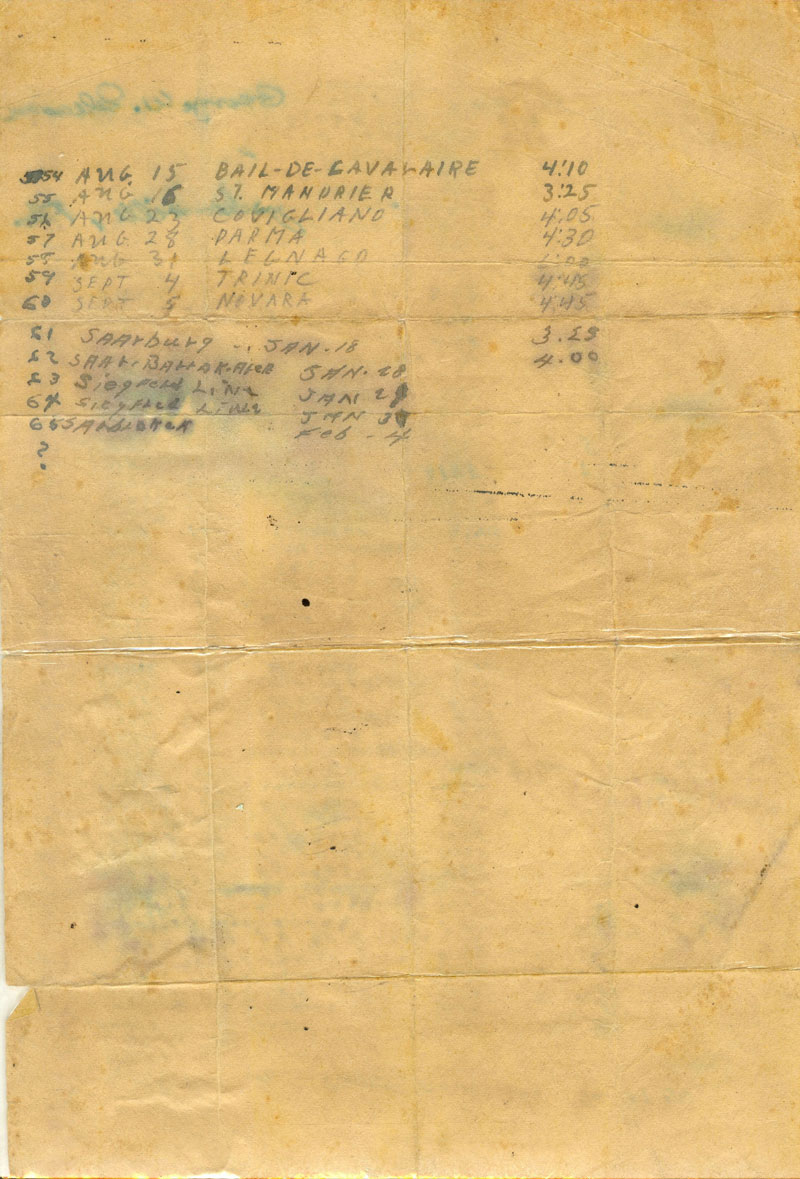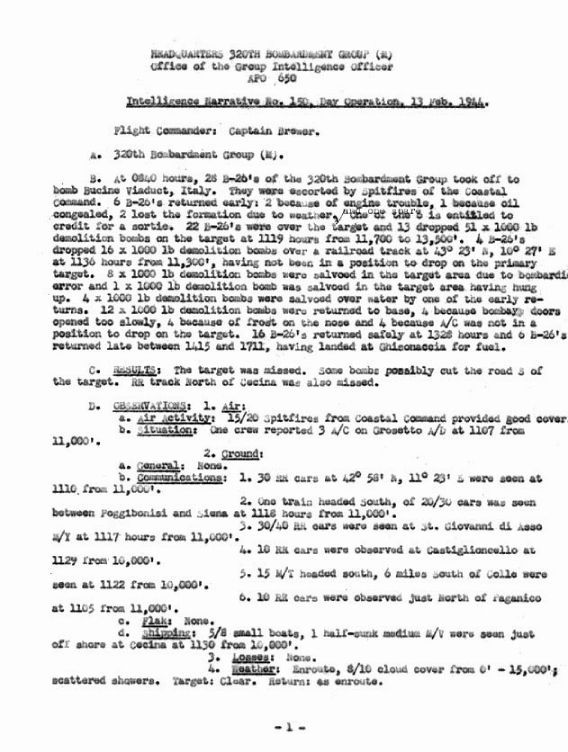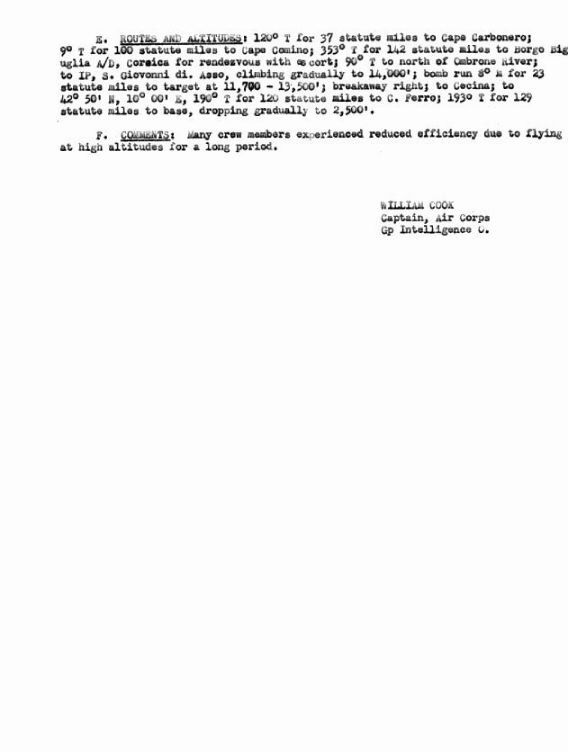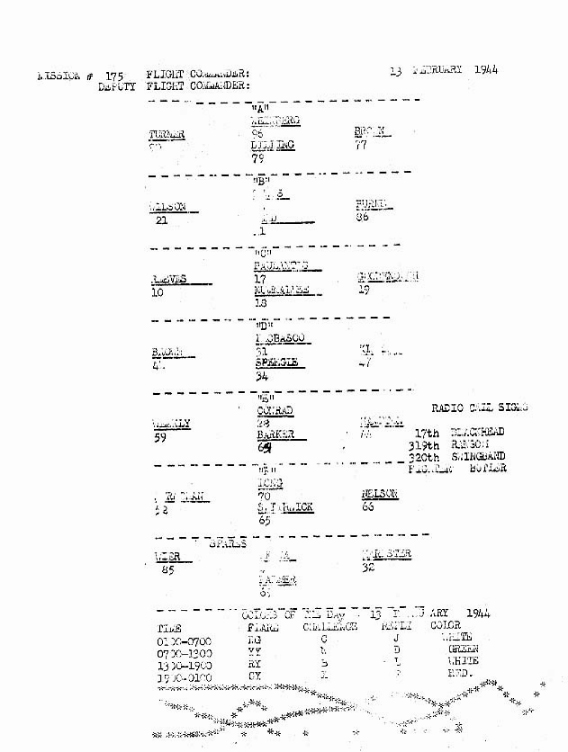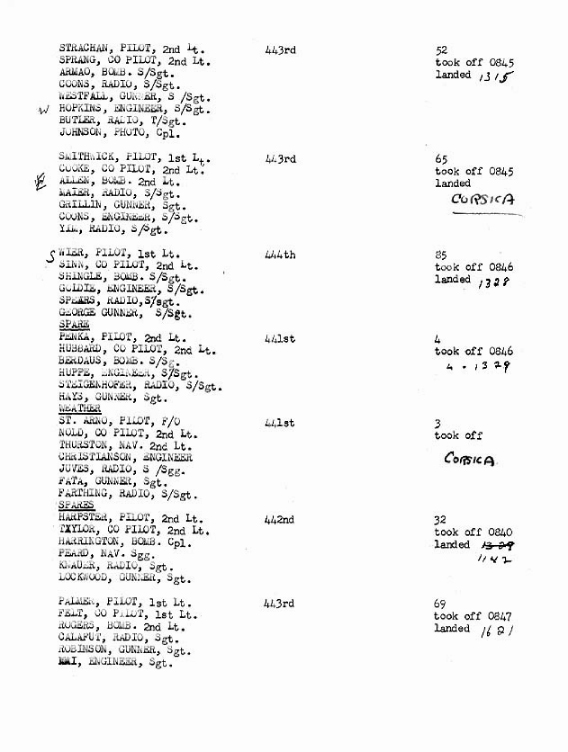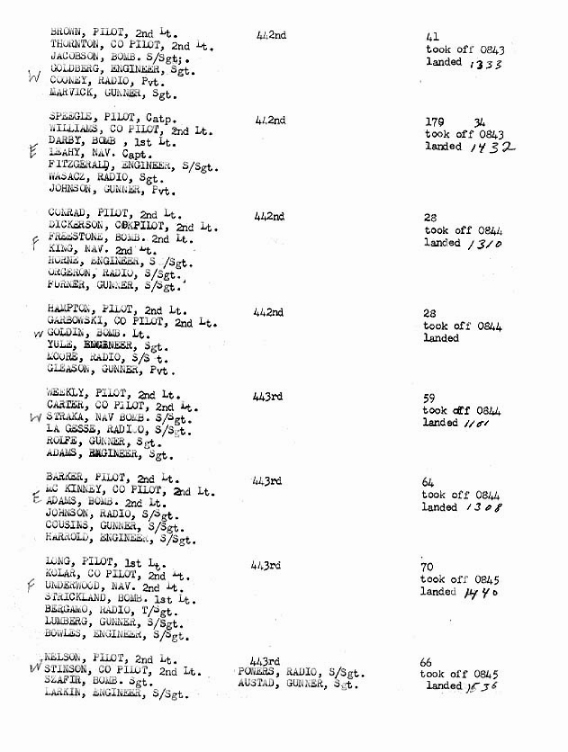|
|
Guest Book | Pages & Links |
George W. Gleason
442nd, 444th Bomb Squadron, 320th Bomb Group
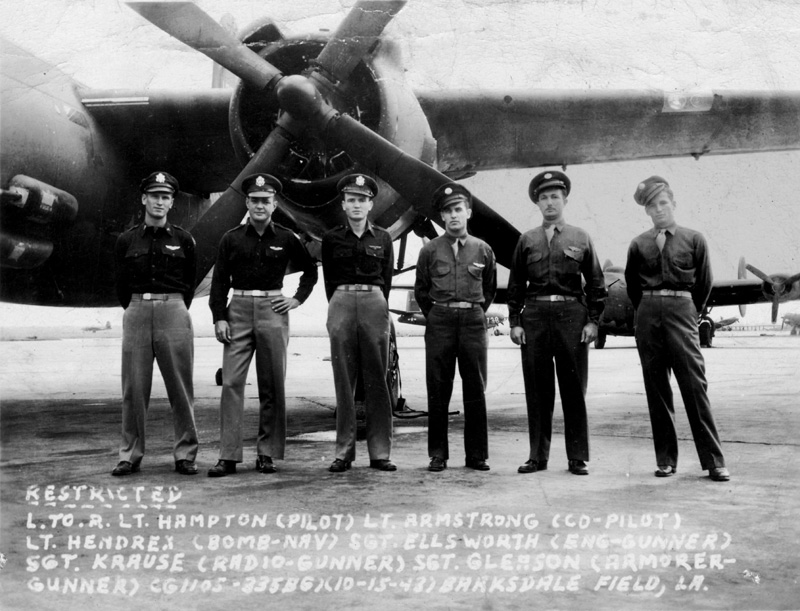 |
| In the fall of 1943 (as far as I can recall), we were back, once
again, at Barksdale Field in Shreveport, Louisiana. We were sent back for
more armament training. While I was at Barksdale, they assigned me to a
bomber crew for training. The crew I was assigned to was: Thomas C.
Hampton (first pilot), Joseph Armstrong (co-pilot), Melvin C. Hendrex
(bombardier), Donald Ellsworth (engineer gunner), William Krause (radio
gunner), and me, George W. Gleason (armorer gunner). We were training real
hard to become a crackerjack bomber crew. Iím going to skip forward (while I can remember it, because my memories come and go) and tell you about some of the personal traits and wartime accomplishments of the men assigned with me to our crew. You can see the photo on the opposite page to match a face with a name (their names and assignment in our crew is at the bottom of this old photo that I have saved for over 60 years). I will speak of them in the order they appear in our crew photo, from left to right. Thomas Hampton, our pilot, was a tall, lean, good-looking guy from Kentucky. He had a lot of patience with me and got me out of a lot of jams. He was a first rate pilot. I would definitely rate him among the best. Wherever there was trouble, I always managed to find it. I was like a baby chick, but our pilot, Thomas Hampton, was like an old mother hen to me. They say that he passed on a couple of years ago, and it grieves me deeply that I didnít get to see him and thank him for all the times he came to my aid when I was in trouble. But I laugh as I remember that there were times that, in his zeal to help me, his enthusiasm backfired, and he actually got me into trouble. After a few episodes like that, when he walked up to me, I just smiled and asked, "Are you here to get me out of trouble or to get me into trouble?" He would just smile. Iíll never forget that smile. I think he truly liked me, and I liked him, and Iíll never forget him. Next was Joseph Armstrong our Co-pilot, strictly a gentleman and a good friend, he also is a very good pilot and among the best. He liked to tell stories and was very good as a jokester. He has passed on now, but not before I was able to renew his cherished friendship. I am grateful for the correspondence we exchanged over the last year or so. I will miss you, Joe! Next is Melvin Cody (lovingly nicknamed "Cootie" by Joe Armstrong,, but "Cody" by me) Hendrex, our Navigator Bombardier. He was always the life of the party. He was Group leader and had a bunch of 100% hits on the target. He grows tomatoes, now, and would rather give you the shirt off his back than to part with even one of his tomatoes. Joe Armstrong,, who later tracked down Cody and went to see him said all I had to do was to show up with a green ice chest and steal some. After I was also able to track Cody down, we had many wonderful phone conversations about those days we spent together. Yeah, we shared some bad memories, but we shared some good ones too, and, when you are in such trying times together, it makes friendship extra important and extra valued...and I valued Cody's friendship a lot...and, although he was too far away to go see, I am so grateful we got to talk. Next is Donald Ellsworth, engineer gunner extraordinaire. With an engine shot up and feathered, most planes wouldnít have made it back, but he told his aircrew buddies he could transfer fuel from the feathered (not working) engine to the good one and theyíd make it back to the home base. When you fly with just one engine it takes more fuel for the engine because it is having to do twice the work. After transferring the fuel from the feathered engine, they were able to get back. If it hadnít been for Ellsworth, they would ended up prisoners of war. It takes a know-how guy to transfer fuel from a main tank to a main tank; itís not often done. Next is William (Bill) Krause, radio gunner, expert in Morse Code and latching onto radio beams. He could be counted on to guide the plane back to base if it was lost. He usually manned the waist gun position and was very good at it. We have had no contact with Bill since the war, but Ellsworth told us that Bill finished his missions and came home to New York, N.Y. Next, and last but not least, except in age only, this was me. And all the guys in our crew were my seniors. I am George Wiley Gleason (Bill, but known only as Gleason back then), and I was the armorer tail gunner while we trained in Shreveport, Louisiana, at Barksdale Field. We were feeling pretty proud of our accomplishments by that point and probably quick to believe that the victory advertised in the WWII poster at the right was within the reach of our country. While we were at Barksdale, we made a lot of cross-country trips in training for landing at strange airports and practicing navigation. We made a lot of trips to the Gulf of Mexico and shot at tow targets. The reason we went out over the Gulf was so the spent cartridge shells would fall in the water and not on top of some bodyís house. On sunny days the Gulf of Mexicoís bright blue water was beautiful. We never were up very high during our gunnery practice so we were able to see the white caps rolling in on the shore and several times we tried to get Thomas Hampton, our pilot, to buzz the beach. We wanted to get a good look at the bathing beauties that were swimming but to no avail -- it was a no-no, and against military orders to do that. We became very good at hitting the tow targets both negative and positive leads. According to Cody Hendrex, he took pot shots at pelicans from the bombardierís compartment. We had a good time and a lot of fun while in training. We flew down from Shreveport Louisiana to the Gulf of Mexico quite often to practice firing our guns at tow targets. Cody was always firing at the pelicans (they were probably an endangered species by the time Cody left...) with his fifty caliber machine gun that was mounted in the nose of the Bombardier's compartment. He claimed that he never hit one of them, but each trip we made, we saw less and less pelicans. I guess the poor birds learned... I was flying the tail gun position, and I swear that at times I thought I saw feathers flying past the tail of our B-26. You know, the combat crews painted a bomb on the side of their plane to represent each mission that they flew... I think after old Cody flying all those trips over the Gulf of Mexico, we should have painted pelicans on the side of our plane. My buddy, Lt. Hendrex, and I corresponded for a while until our health problems interfered, and he reminded me that while we were stationed at Barksdale in 1943, our original crew flew out to get in some flying practice time, called "cross country hops." We would fly to other cities in order to get some practice landing at strange air fields, practice navigating, and, at times, the distance would be great enough that we would have to refuel when we landed and we'd get practice at that. On one of these trips, it was overcast and the weather was really bad. Our navigator (Hendrex) became lost and had difficulty finding his bearings. Sgt. Krause, our radio gunner, tuned in to a radio frequency in Shreveport, LA, and was able to guide us back to our base. Additionally, Lt. Hendrex told me that he got lost another time and was pretty sure he flew over a restricted area of a nuclear facility in Tennessee. The impact of bad weather on navigational skills was often a factor when crews got temporarily lost. I remember a funny story about Cody trying to get our pilot, Thomas Hampton, to let him ride in the Bombardier's compartment on take off. That is a no, no ~ it was strictly forbidden because the nose is the most dangerous place in the plane in case of a crash on take off. Well, old Hampton finally let Cody talk him into letting him get into the nose, which he did, and we proceeded to take off. Cody leaned over to get a better look at the ground whizzing by, and he fell against the trigger of the fifty-caliber machine gun and fired off about thirty rounds before he could get off the trigger. I really don't think that anyone ever knew that it happened (I know that I didn't know until after the war when Cody mentioned it, thinking I would remember it). Hampton had just cleared some oil storage tanks at the end of the runway and Cody's bullets spattered up dirt all along side of two of the tanks. Cody laughs about it now, but I don't think that Hampton sat by him in the mess hall for a while until his temper cooled off... but not for long because they were the best of friends, always. Knowing Hampton good sense of humor, he probably told Cody that he was a lousy shot 'cause he missed all the tanks. I remember we were flying in the month of July, and it was very hot on the ground and we got sweaty loading our guns and the bombs to be dropped at the bombing range. After we took off and got up to a few thousand feet there was a sharp drop in temperature (like to zero) and very cold, but not to worry, we had a heater. (While overseas you had to turn the heater off when you approached the target area.) This was done because, if we were hit, and had a gas leak in it, the gas could have started a fire. I have such good memories of my original crew. They were good men, in spite of us all really just being overgrown boys at the time. |
|
|
|
| Frank wasnít satisfied until he went and got his b-b gun and had me pose with it. Finally, he thought I looked sufficiently like a soldier. The things we do for family, right? | |
 |
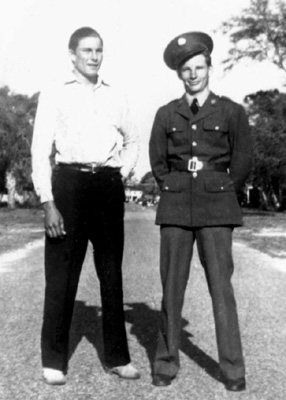 |
| I am standing here with my good buddy, Vernon Locke. Vernon was strong from working a diary farm with his brothers and the perfect buddy to serve as my unofficial bodyguard in school when bigger and stronger kids than me decided to pick on me. My daughter and I tried really hard to use all the resources on the Internet to find out what happened to my good buddy, but we were not successful. Ole' Vernon had such an impact on my life, I'd like for him to know I never forgot his kindness in taking this scrawny kid under his protective wing. Where are you, oleí buddy? Iíd sure like to say hello if youíre still around. | |
|
|
| In this photo, I was just 18 years and a few months old, a raw recruit at Hunter Field. My pay was $21 a month, but I was looking for bigger things and more money. I was still "Air Force Unassigned." The guys that had been tested before us tipped us off about the tests. They said if you didnít want to be a grease monkey (those grease monkeys later helped keep us alive!) on an airplane to flunk the mechanical movements test, but to make real high on the math tests. That way, you would go out to your new squadron as "Air Corps Unassigned" and could then pick from a variety of other good jobs to sign up for. I want to give credit to those "grease monkeys," the men and women that maintained our equipment that made it easier for us to do our job. Their hard work protected us from the enemy on all fronts. They were the ones that walked in the shadows while we reaped the glory and took the bows and got the medals and I thank them from the bottom of my heart! A lot of us would not be alive today had it not been for the dedication and diligence of those "grease monkeys." |
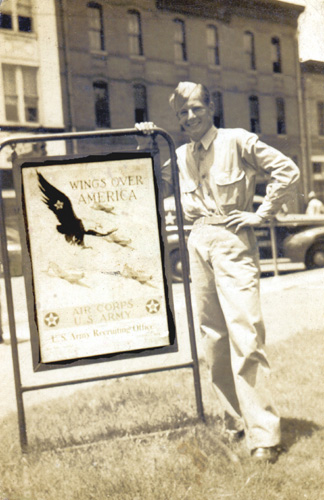 |
 |
| In the summer of 1942 (as far as I can recall), I was sent to Key Field in Meridian, Mississippi. In the photo, I think I was standing in front of the Meridian post office. The cities usually had recruiting posters in front of the post offices and inside the buildings. The poster in the photo was called "Wings Over America" and Donna, my daughter, found a photo of it (see poster). | |
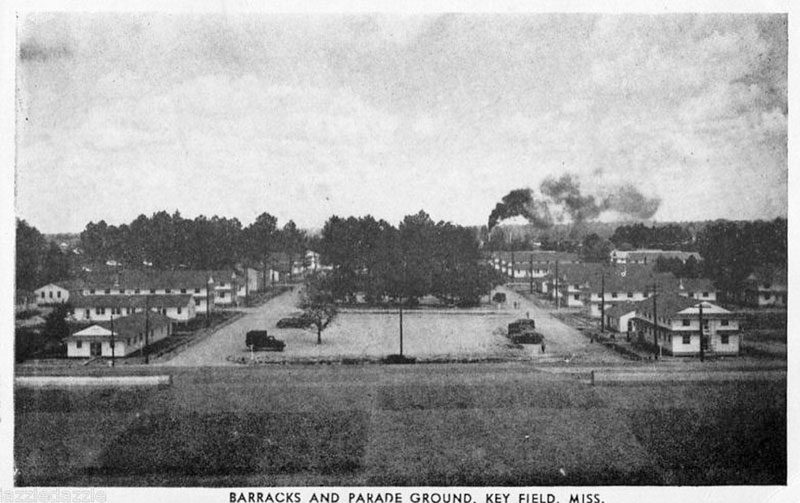 |
|
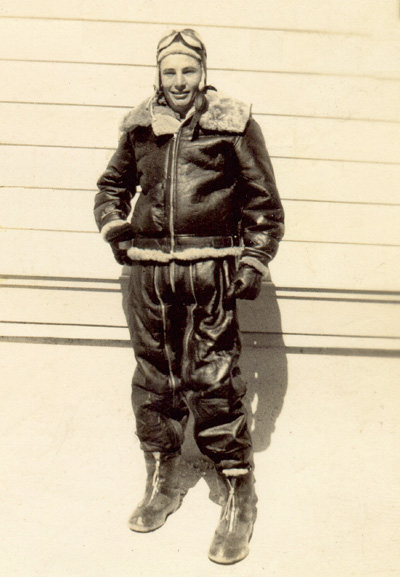 |
In this photo, in spite of the summerís heat, I could not resist
trying on my newly assigned, brand new winter flying gear. Pretty cool,
huh? Our regular winter uniforms were made of 100% wool, olive drab in
color, and, boy, did they itch! I always was relieved to get to wear our
summer uniform, which was made out of a more comfortable khaki cotton.
|
| At Meridian, I was assigned to A-24 dive-bombers. When you went up in
an A-24, it was just the pilot and the gunner. You went into a real steep
dive toward your target and then swung up after you dropped your bomb. I
sure am glad I was not assigned to the A-24 dive bomber very long. In this
photo, I had my machine guns off my plane, and I was cleaning them. I remember that, at this base, there were some clashes with local civilian drunks at the top of the hill honky-tonk. (For you young kids, that's a bar.) Tempers ran high, and some of our men got into fights with them. During one of the fights, one of our guys got his eye hurt really bad, which got our guys into lots of trouble because they eventually retaliated against the civilians. For once, I wasn't in the middle of it. I stayed out of that particular trouble, but some of the guys had to march in circles on the base all night long to get an "attitude adjustment." Since I wasnít involved, I didnít have to. I just watched from the window. I was glad it wasn't me in trouble (for a change), but I felt sorry for my buddies. There was a nice roller-skating rink in town, and I loved to go when I got the chance. It was right next to a hamburger joint called "Fredaís Royal Drive In." I used to go skate, and then go next door to grab a hamburger. They had the best hamburgers ever there. Freda, the owner, had a heart of gold. She was like a mother hen to all of us soldiers. If a guy didnít have enough money to skate or get a burger, she would often pay for it for them. She was a great lady, and we all appreciated her and her "mothering." I have never forgotten her or her kindness. |
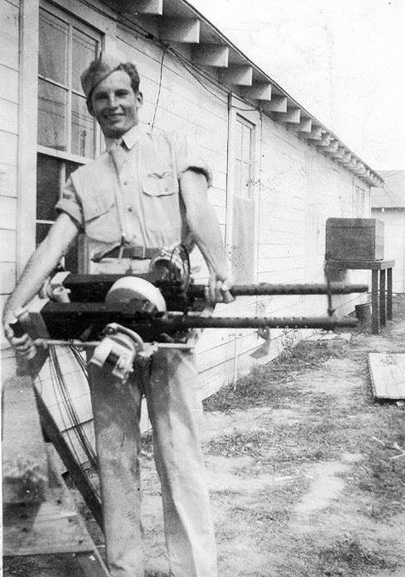 |
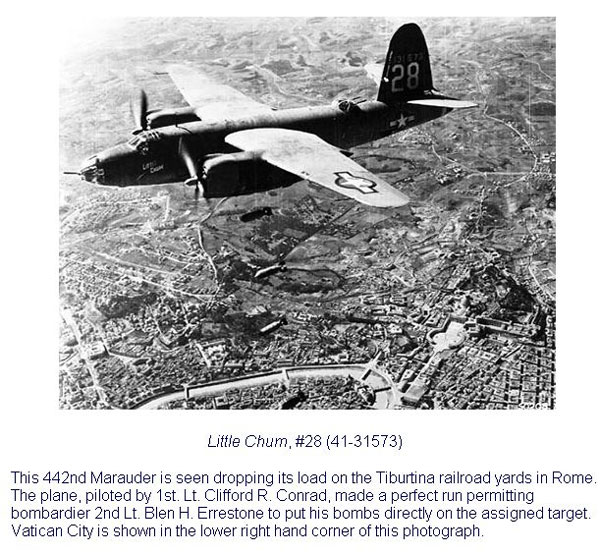


![]()
